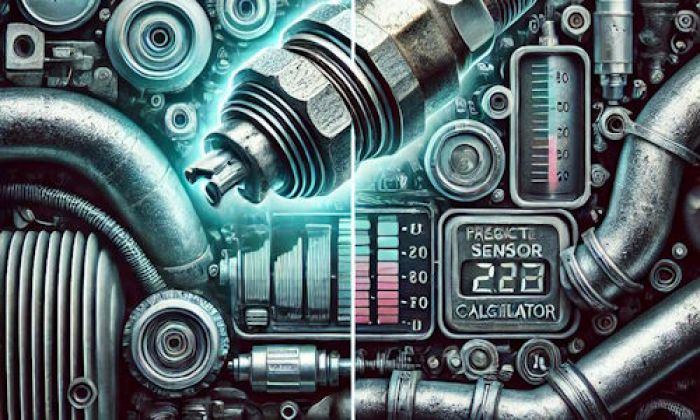For the most part, the Dodge 3.9 Magnum V6 is capable of getting the job done. It's basically a lot like the preceding 5.2L V8 but only with the two cylinders removed and the displacement tweaked.
Along the way, the 3.9 Magnum V6 was adjusted in its horsepower and torque as various upgrades were introduced into it like the new exhaust manifolds in order to guarantee its optimum performance and reliability. However, its production run was plagued with different problems. The most common is the rough idling experienced by users of the engine, which is one of the key problems we will tackle in this article.
.jpg)
Key facts and my opinion about the engine
- Production years: 1992-2003
- Average lifespan of 3.9 Magnum V6: 220,000-250,000 miles
- Fuel supply type: port injection
- Power range: 175-180 hp
- Fuel efficiency: below average
- Engine block material: cast iron
- Engine reliability score: high
- The most common problems: rough work, weak sensors, fluid leaks, minor issues.
If you're considering engine swapping or buying a used vehicle equipped with the 3.9 Magnum V6, here are the common problems associated with it that you should be aware of:
1. Rough Idle
The way that the intake valley pan of the 3.9 Magnum V6 is integrated exposes it to too much vibration that eventually causes its bolts to push the valve gasket out. This then results in vacuum leaks.
The vacuum leaks then lead to engine misfires that cause rough idling. The consequence of this series of events is a noticeable shaking of the vehicle when stationary for an extended period of time, which is why the engine is said to be prone to rough idling.
In order to confirm the source of the problem, there are several methods one can utilize. First and foremost, manual evaluation can be used by examining the valley pan gasket for any obvious deformations or damage as well as inspecting the bolts for misalignments that could lead to misfiring. Additionally, tools such as a vacuum gauge can provide valuable feedback on whether or not there is indeed a leak in this area.
Other parts may also contribute to rough idling, such as bad spark plugs or fuel injectors that need cleaning. Poorly functioning sensors like those found in air flow meters (AFM) and mass air flow sensors (MAF) can cause the car to misfire and display rough idling as well.
The solution for this issue is quite straightforward. All bolts need to be checked for tightness and alignment, in order to prevent any further vibrations from them loosening up. If there are indeed any leaks, then the gasket needs to be replaced with a new one.
Furthermore, if other components such as spark plugs, fuel injectors, or sensors are causing the problem, these should be serviced accordingly. Additionally, an air intake system cleaner may help restore performance over time. All of these parts can be found easily at most auto part retailers.
In general, it is important to keep up on regular maintenance of your vehicle's engine to ensure smooth functioning. With that being said, the problem of rough idling due to a faulty intake valley pan can be managed easily once it is identified. By following the measures outlined above, one should be able to diagnose and resolve this issue quickly without too much difficulty.
Finally, a good quality replacement part should always be used when replacing any essential components in order to maximize the longevity and performance of the engine. Keeping up on regular maintenance checks can further help identify problems before they become more serious and more expensive to fix, so it is important to make sure that all parts are inspected regularly for issues like these.
2. Malfunctioning Crank Position Sensor
Crank position sensor issues appear to be very common not only in this engine but also in most Dodge vehicles. The most common reasons for these are corrosion, loose magnets, and damaged sensors. This can be very problematic because when the sensor fails, the engine will not be able to detect a spark and, as a result, will not start.
To assess the source of this problem, one should look for symptoms such as misfires in the engine, stalling after warm-up, longer than normal cranking when starting up the vehicle, or even no response from any attempt to start the engine.
This can be done through manual inspection of all components related to the ignition system on 3.9 Magnum V6 engines. If a problem appears in any of these areas, it is most likely due to the crank position sensor malfunctioning.
Tools such as a diagnostic code scanner can also help pinpoint the exact location and cause of this issue by providing codes that correspond to specific problems. The most reliable way to rule out any other issues is with an oscilloscope that can measure the voltage output of the crank position sensor, as this will tell you if it is not working correctly or if the signal sent to the engine is too weak.
For the problem to be fixed, one must replace the affected parts such as spark plugs and wires, distributor cap and rotor, coil-on-plug system, ignition coils, and/or crankshaft position sensor itself. Also, make sure all wiring connections are securely mounted and free from any corrosion or debris that could interfere with its operation. Additionally, ensure proper lubrication of components in order to prevent wear due to friction caused by heat and vibrations.
Replacing the malfunctioning crank position sensor is a must if one wishes to get the most out of their 3.9 Magnum V6 engine. In order to do this, one should first identify which specific type of sensor is being used in the vehicle as there are many different models and designs.
The wiring must also be inspected for any damage or corrosion, as this could be the reason for the malfunction in some cases. Lastly, an oscilloscope should be used to measure the voltage output of the sensor so that one can verify it is indeed faulty. Once all of this has been done, if the issue persists then a replacement must be acquired and installed in order for the engine to run properly again.
3. Large EVAP Leak
A large EVAP leak can cause problems in the 3.9 Magnum V6 engine due to its effect on fuel economy and emissions performance. When this occurs, it is important to identify the source of the problem to prevent further damage or loss of efficiency.
The most common causes of a large EVAP leak can be related to worn-out components such as hoses, gaskets, valves, or seals; damaged or faulty fuel injectors; and an incorrectly adjusted idle speed. In order to assess these potential issues, one should look for symptoms such as surges in engine power during acceleration, poor fuel economy, and high tailpipe emissions.
Additionally, manual checks should be done to check for any visible signs of wear or damage on the EVAP system, and diagnostic tools should be used to measure actual system performance.
If a large EVAP leak is detected, then replacing any damaged or worn-out components should be done in order to rectify the problem. Depending on the severity of the issue, this could include hoses, gaskets, valves, and seals within the EVAP system as well as potentially faulty fuel injectors and an incorrectly adjusted idle speed.
Replacing these parts will help get the 3.9 Magnum V6 engine back to optimal efficiency and reduce emissions levels for improved environmental compliance. Sometimes, additional repairs may also need to be carried out in order to address any underlying issues that caused the large leak in the first place.
In all cases, it is important to take the necessary steps to not only identify and fix the source of the problem but also prevent any further damage or loss of efficiency. Once these procedures have been carried out, the 3.9 Magnum V6 engine should be running properly again.
4. Transmission System Issues
Many users of the manual transmission version of vehicles equipped with the 3.9 Magnum V6 have complained about having problems shifting at some point. According to them, the problem of shifting into a gear is often accompanied by a growling sound before hearing a click that eventually lets the gear engage.
While this obviously points to an issue with the clutch, mechanics familiar with the problem has attributed it to the throw out play on the crank that Dodge is known for. Therefore, this is something that you should look for before replacing any problems in the clutch.
The automaker said that the problem can be typically located at the end play in the crank. The end play can be adjusted by the use of a torque wrench and properly adjusting the clearance until it meets the manufacturer's specifications.
Once you have done that, you should check for any signs of wear or damage in the clutch assembly. If there are any signs of wear or damage, then it is best to replace the entire clutch assembly as repairs may not be effective. Lastly, make sure that you lubricate all parts and components around the area before putting everything back together again.
Doing so will ensure that your transmission and clutch stay intact while also guaranteeing smooth shifting performance at all times.
Conclusion
Not all 3.9 Magnum V6 engines are problematic, especially the ones that are subjected to regular maintenance. However, the signs of these issues should be the things that you should pay special attention to when using the engine as they are the most common to pop up from time to time based on user experience, reports, and the official admission of Dodge.
About the authors
The CarAraC research team is composed of seasoned auto mechanics and automotive industry professionals, including individuals with advanced degrees and certifications in their field. Our team members boast prestigious credentials, reflecting their extensive knowledge and skills. These qualifications include: IMI: Institute of the Motor Industry, ASE-Certified Master Automobile Technicians; Coventry University, Graduate of MA in Automotive Journalism; Politecnico di Torino, Italy, MS Automotive Engineering; Ss. Cyril and Methodius University in Skopje, Mechanical University in Skopje; TOC Automotive College; DHA Suffa University, Department of Mechanical Engineering






Add comment